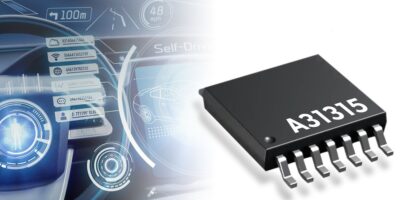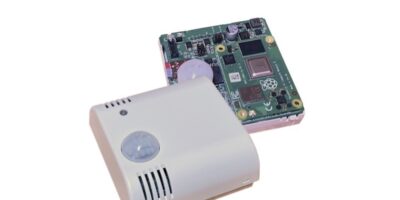Multi-phase, controller-agnostic control for high performance GPUs, servers, 5G, and artificial intelligence (AI) applications is offered by the AOZ527xQI series of smart power stage device by Alpha and Omega Semiconductor.
The devices target multi-phase voltage regulators used to power high-performance GPUs and CPUs in desktop add-in graphics cards (AICs), gaming laptops, servers, data storage, AI and networking equipment.
The AOZ527xQI series uses Alpha and Omega Semiconductor’s latest generation of a flexible smart driver IC and Gen Alpha MOSFET technology to provide what it says is benchmark performance in an industry-standard 5.0 x 6.0mm QFN package.
There are three DC current levels for multi-phase voltage regulator optimisation in the series.
An SPS provides current monitoring (Imon) and temperature monitoring (Tmon) information. The Imon function is used to replace traditional DC resistance (DCR) sensing schemes with improved accuracy and to eliminate the external components needed for DCR sensing and tuning. The Tmon pin doubles as a fault pin, reporting the power stage temperature by outputting an analogue voltage of 8mV per degree C. The Tmon pin is an open-drain output that pulls high in the event of a fault.
The AOZ527xQI devices use a configurable driver IC to make the smart power stage compatible with many multi-phase controllers available in the market today. It includes over-current protection (OCP), over-temperature protection (OTP), high-side FET source detect (HSD) and pre-over-voltage protection (pre-OVP).
Alpha and Omega Semiconductor follows the industry standard 5.0 x 6.0mm common footprint for a smart power stage, but its smart power stage also features a dynamic control of OCP threshold settings and zero-cross detect (ZCD) light load operation. The company’s smart power stage series offers both performance and robustness to support high peak currents common in servers, high performance GPU and AI applications. All devices in the family feature high peak current capability, up to 150A for 10 micro seconds and 100A for 10 milliseconds.
The AOZ527xQI family of SPS supports both server, AI and GPU add-in card (12V input) as well as gaming laptop (20V input) input voltage operating range. Three performance levels (60A, 70A, and 90A) allow tradeoffs in the current/phase and number of phases.
The AOZ527xQI series, consisting of the AOZ5273QI, AOZ5276QI, AOZ5277QI and AOZ5279QI, is available now in production quantities with a lead-time of 12 weeks.







